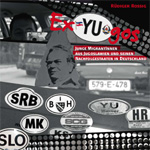Rüdiger Rossig | Journalist | Novinar
Understanding the past, reaching out to the future
The Kreisau Foundation helps young people to become immune to ideology | By Ruediger Rossig
The former von Moltke estate in Lower Silesia was once German but has been part of Poland for the past 55 years. Nowadays, thousands of young people gather there annually and breathe new life into relations between the two countries.
There is still a train service to Krzyżowa in Lower Silesia, Poland. The station in the village of 200 residents was built in the days of the German kaiser so he could visit his chief of staff, Helmuth Karl Bernhard, Count von Moltke (1800-1891). A train stops there six times a day now.
The manor house that belonged to the von Moltke family until 1945 still dominates the center of the village, which was called Kreisau when it was part of Germany. In the large courtyard ringed by the gatehouse and the laundry house, an outbuilding, the whitewashed palace, the granary, and the stalls, young people blanket the commons.
“German, Austrian and Turkish secondary school students are visiting at the moment,” said Jan Kirchhoff, an instructor at the Kreisau Foundation. The 32-year-old political scientist who specializes in Poland has lived in Krzyżowa for almost a year. Since his first day, the spirit of the Kreisau Circle, its concept of mankind and its convictions have inspired him. Now, he says, he would like to “help make the young people here immune to all types of ideology.”
Krzyżowa also inspires Agnieszka Janik. The 28-year-old student from nearby Wrocław coordinates projects here. “It’s a great opportunity to deal with Polish-German relations on a very basic level,” she said. “In the projects I coordinate, you can see how easily young people integrate even though very often there are huge disputes between the countries they come from.”
The Kreisau Foundation was established to gather young people from different parts of Europe together. Germans were not responsible for the original idea; it came from members of the anti-communist Polish opposition who met at the Catholic Intelligence Club (KIK) in Wrocław throughout the mid-1980s.
“While doing research on the history of former Breslau in 1989, KIK dissidents happened to discover that the estate of Helmuth James, Count von Moltke, a member of the resistance to Hitler, was located close to the city in the village of Krzyżowa,” said Dominic Kretschmann, 37, who also works as an instructor at the foundation, as well as giving guided tours on the history of Kreisau.
“The people in the KIK quickly discovered that there were similarities between the attitudes of the men and women in the Kreisau Circle toward the Nazi regime and their own opposition to the communist dictatorship.”
KIK members surveyed the Krzyżowa residents who had lived in Kreisau before the end of World War II. In July 1989, the club organized a conference on the Kreisau Circle. The meeting ended with an excursion to Krzyżowa.
In 1945, Kreisau – just like the rest of Silesia – became part of Poland. The Germans were driven out and the estate was used to house Polish refugees expelled by the Russians from eastern Poland. A collective farm later used the buildings.
By 1989, large parts of the estate stood in ruins. The stall roofs were leaky and the palace had been abandoned. Helmuth James and Freya von Moltke, the last of the traditional owners, had avoided using the palace, which was difficult to heat because of its high ceilings, and spent most of their time in their “Berghaus,” a cabin just 10 minutes away.
“When the conference participants saw the ruins, they decided on the spot to develop an international center for young people here,” said Kretschmann. “The only thing lacking was money.”
But then history came to the aid of “new Kreisau.” In August 1989, long-standing KIK member Tadeusz Mazowiecki became the first non-communist head of government in Eastern Europe, after which West German Chancellor Helmut Kohl paid an official visit to Poland. The two countries were looking for areas of common interest – and one of them turned out to be the struggle against dictatorship as it was conducted in Kreisau.
In November 1989, just three days after the fall of the Berlin Wall, a German-Polish reconciliation mass was held in the courtyard of the former von Moltke estate in Krzyżowa. After the mass, the German and Polish participants pledged to rebuild Kreisau.
The encounter center in Krzyżowa was officially opened in 1998. Today the Kreisau Foundation dedicates its work to four major fields of activity. In addition to working with young people, there is a memorial site in the palace devoted to exploring the history of the Kreisau Circle and other groups that resisted the Nazi regime and the communist dictatorship.
The conference center and hotel there are used by the foundation and rented to other groups. The European Academy, a continuing education program for key communicators involved in German-Polish and international youth work – journalists, youth group leaders, teachers, and NGO staff – also meets there.
Ecology is the Kreisau Foundation’s latest field of activity. The estate has had its own garden for a long time. But starting in 2010, it will be integrated into the center’s annual program. “Here in Silesia we still have to do a lot of consciousness building,” said Kirchhoff. “And while we’re doing it, we’re homing in on the plan that old von Moltke had for Krzyżowa.”
Helmuth Karl Bernhard, Count von Moltke used the bonus the King of Prussia had paid him for winning the war against Austria to acquire the estate in 1866. He had planned to turn it into a farm.

 Deutsch
Deutsch  Naški
Naški  English
English 
